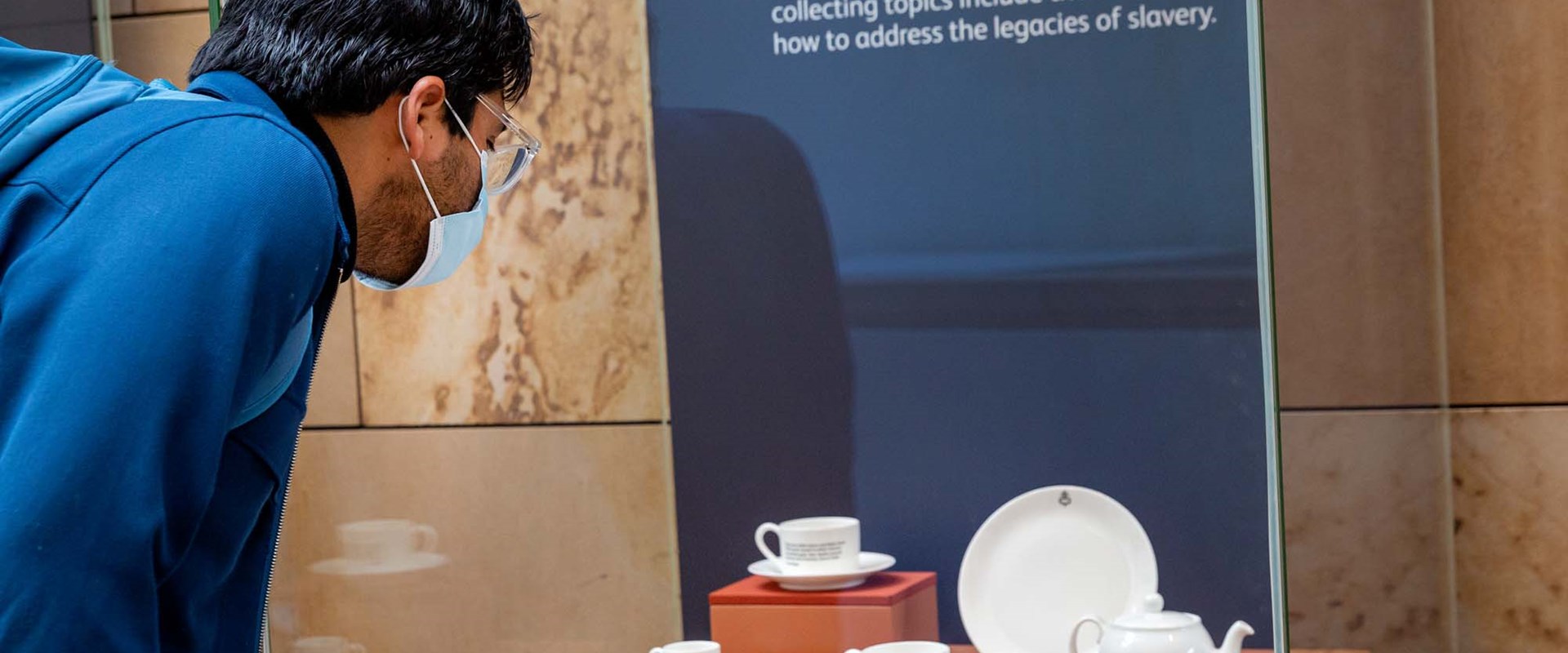Key in a search term below to search our website.
Key in a search term below to search our website.

Has anyone ever asked you... What are you into? What’s your thing? Maybe you’re still figuring stuff out? Maybe you’re looking for inspiration? Maybe you’re into loads of things or maybe you’re really into something specific. However you see your world, inside this amazing building are millions of stories to explore. Stories that will connect with you. Find your thing!
Find Your Thing is a resource for any groups visiting the museum, but is particularly suitable for groups of young people, adults with learning needs, and family organisations with older children. It was created by a group of young people from the National Lottery Heritage Fund funded Scotland 365 project, who were looking for a ‘way in’ to the museum and its collections that was accessible and fun, with no expert previous knowledge needed.
It is designed to help anyone to find an object or group of collections they love, and connect to it on personal level, and use this as a starting point for a whole range of interesting discussions and ideas. We hope that it will help your group find inspiration and learning at the museum, make them feel connected to the objects and spaces, and be a springboard for a range of ideas and approaches that can also help support health and wellbeing, confidence and skills development.
The video below shows a group of young people using the toolkit to find their thing.
If you would like your group to be supported by member of staff or see if booking a room is possible, please contact our Community Engagement team at Communities@nms.ac.uk
Micro-adventures: for older groups (aged 11+) give them chance to develop some independence by breaking into smaller groups using the three different Find Your Thing cards, with a time limit of 30 mins. If they have smartphones ask them to take a picture and come back to tell you what they’ve found, where it's from, and how they would answer some of the questions on the card.
Mindful moments: when they’ve found find an object they love, ask them to spend 3 minutes with it, just looking, noticing its patterns, textures, shapes, colours and form - mini mindful moment to support their health and wellbeing.
Track your steps: use Google maps to see how far you have walked, and how long you were moving for. See who travelled the furthest in the group.
Safer spaces: set the tone of any group discussions first, especially if dealing with objects that might cause a personal, emotional response. Offer a safe space to discuss feelings with freedom, respect and empathy. Set ground rules of respect and empathy and listening.
Games: use a low pressure, fun activity to showcase their object. Grab a hat, bowl or other receptacle, write down the names of all the objects found on bits of paper, fold them and put them in the ‘hat’ First round the player has 1 min to take the names out of the hat and describe them to the group without using its description, keeping a tally of the used names. Once the 1 minute is up the player passes the hat to the next person. Once the hat is empty, you can move onto a second round where you can only use 3 words. The final round is mime only. Tricky, but much easier once you’ve done rounds 1 and 2!
Quick fire presentations: develop presentation skills by suggesting they ‘present’ back their object to the group in under 2 minutes – no pressure, no right or wrong answers, just what they thought/felt.
Sorting skills: sort the chosen objects out into their relevant group or theme – are they something from the natural work, something to do with science and technology, art and design, archaeology? Have people from one area more than another, and if so why do you think that is?
It’s a material world: ask the group to think about their personal connection to objects in their own, home life – what is important to them and why?
Do they:
Discuss why they think some objects are so important to our/other cultures. Why do they think we form such strong relationships with objects?
Get the group to make a TikTok video about their object if appropriate – can you make it funny?
For example:
Learn more about how you can evaluate your visit with our social impact toolkit.